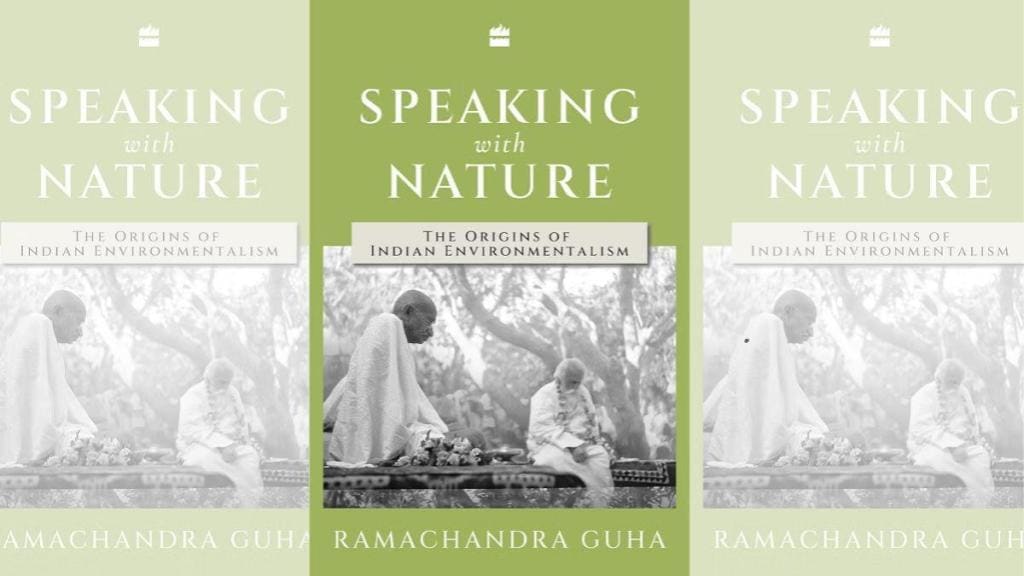By Amitabha Bhattacharya,
V
B
While reading this book, I was frequently interrupted by old memories and associations. I remember having written in Bangla for my school magazine how nature was integral to Tagore’s poetry, how during my district training at Srikakulam I had spent a month in a tribal area named ‘Elwinpeta’, and how I had grown up reading columns of M Krishnan in The Statesman. I knew about Radhakamal Mukherjee as an important academic from Lucknow, of Patrick Geddes as the biographer of his scientist-friend Jagadish Chandra Bose, about KM Munshi as a noted author who founded the Bharatiya Vidya Bhavan, and of JC Kumarappa and Madeleine/ Mirabehn as Gandhiji’s devoted associates. I hardly knew anything about the remarkable couple Albert and Gabrielle Howard, except by name.
Ramachandra Guha’s genius lies in discovering the common thread that tied the ten characters, with different levels of renown, in a manner that is both exhaustive and absorbing. Mixing description with analysis, and covering around a century—from Rabindranath to Krishnan— Guha unites them in that “they all addressed human-nature relationships, and they did so in writing”. Admittedly, Guha’s books that select individuals and their contribution to public causes— whether in shaping modern India or through writing and acting on ecological issues—have sometimes been criticised by casual readers for having left out personalities of their choice. Many such critiques emanate from an inadequate understanding of the historical context in which Guha posits such men and women.
The title of the chapters indicate why Guha selected the individuals and in what specific area their contribution turned out to be pioneering and unique. Keeping the average reader’s patience in mind, Guha uses his pen to briefly sketch the defining moments of one’s life and how the causes they espoused—through words and action —marked the ‘origins of Indian environmentalism’.
Francis Bacon’s powerful idea that human beings should conquer nature and by dominating it can improve their living conditions influenced generations in the West and is often inked with colonialism. Colonial rule constituted an ecological watershed since it brought with it “new technologies of controlling, manipulating, reshaping and destroying nature”. Guha accepts John McNeill’s definition of environmentalism “as the view that humankind ought to seek peaceful coexistence with, rather than mastery of, nature”, and argues convincingly that “environmentalism as I define it was made possible only after the subcontinent came under the control of British imperialists”, and perhaps arose because of colonial exploitation. His identification of the protagonists has to be seen in this perspective.
Though each essay is majestic in its sweep, none is bereft of complexity, well researched details and nuances. For instance, Tagore’s lifelong engagement with the beauty and variety of nature is well-known (as for many other writers), and his concerns about environmental destruction were also not altogether unique even at that time. But Guha notices that Tagore “gave this critique of industrialism and imperialism a distinctive ecological twist”, and explains, in ample measure, why “Rabindranath Tagore was an unacknowledged founder of the modern Indian environmental movement”. To make the dry and barren land of Santiniketan dotted with trees and groves, Tagore introduced the Briksharopan (tree-planting) ceremony in July 1928, to be held every year, putting his heart and soul behind it. It transformed everything.
Much later, in independent India, KM Munshi as the minister in charge of forestry, introduced Vana Mahotsava (grand festival of the forest) on a pan-India scale, invoking the imageries from Hindu religious texts, going to the extent of saying, “if the Vana Mahotsava is to be celebrated in the proper spirit, everyone in India should, during the Mahotsava week, live on vegetables, fruits and tubers”. Munshi was not an ordinary individual and Guha has not been unkind to him either. Though Vana Mahotsava became more of a ritual with little impact, as it often happens with “top-down state-sponsored environmentalism”, Munshi is rated as “the first thinker or activist in India to bring an explicitly religious dimension to the conservation and protection of nature”.
Radhakamal Mukherjee’s life and legacy are discussed thoroughly, and he is quoted extensively for Guha to establish his image as a pioneer in ‘interdisciplinarity’, and also “an ‘environmental sociologist’ and an ‘ecological economist’ long before these branches of scholarly enquiry had been thought of or invented.”
In each of the essays—surveying and focusing on Verrier Elwin’s spirited defence of tribal rights, highlighting Krishnan’s approach of “putting nature first, by viewing the present and the future from the perspective of the non-human world”, writing with empathy about the pragmatic, even perhaps utilitarian views Kumarappa and the Howards, as also of bio-centric ideas of Geddes to make our cities and town more habitable, elaborating on Mira’s passionate advocacy of “progressive removal of mechanisation and chemical fertilisers in agriculture”—Guha illuminates our ideas about what we have inherited and where to go. In the Epilogue, Guha touches upon the limitations of these pioneers, especially in the context of newer challenges like the impending gloom of climate change.
Understandably, there is no separate chapter on Gandhiji; equally understandable why Gandhiji appears in some form or the other, in most of the chapters.
This is a go-to book that should be ‘chewed and digested’.
Amitabha Bhattacharya is a former IAS officer who has also worked in the private sector and with the UNDP.
Title: Speaking with Nature: The Origins of Indian Environmentalism
Author: Ramachandra Guha
Publisher: HarperCollins
Number of pages: 440
Price: Rs 799


